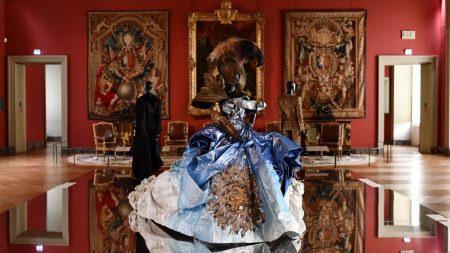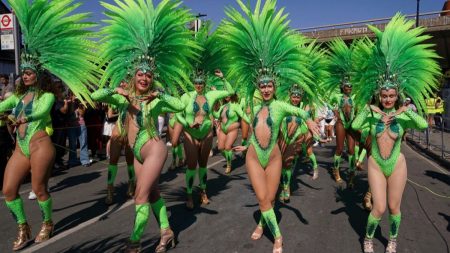The tranquil landscape of Dungeness, a unique shingle headland on the Kent coast, has become an unlikely battleground between artistic expression and environmental preservation. Sam Cox, the artist known as Mr. Doodle, has submitted a planning application for a distinctive three-bedroom bungalow, its exterior envisioned as a canvas of his signature “graffiti spaghetti” style doodles etched onto rusted metal panels. This proposal, however, has ignited a firestorm of controversy among local residents and conservationists who fear the project’s potential impact on the delicate ecosystem and the area’s aesthetic character.
The heart of the dispute lies in the perceived clash between Mr. Doodle’s artistic vision and the austere beauty of Dungeness. Critics argue that the proposed dwelling, with its intricate and whimsical facade, is fundamentally incompatible with the stark, minimalist landscape and the vernacular architecture of the area, which is characterized by simple, functional structures often clad in weather-beaten wood or corrugated iron. They contend that the ornate metalwork would be a jarring intrusion, disrupting the visual harmony of the environment and diminishing the unique character that draws visitors and residents alike to Dungeness.
Beyond aesthetics, significant concerns have been raised regarding the potential ecological impact of the proposed structure. Dungeness is a designated Site of Special Scientific Interest (SSSI), recognized for its unique shingle habitat and the diverse array of flora and fauna it supports. Opponents of the project fear that the intricate metalwork, with its numerous crevices and projections, could pose a hazard to wildlife, potentially trapping or injuring insects, birds, and small mammals. The rusting metal itself is also a point of contention, with some expressing concerns about the potential for leaching of metal oxides into the surrounding environment, posing a threat to the delicate balance of the ecosystem.
The Lydd Town Council has formally objected to the planning application, echoing the concerns of residents. Their official statement emphasizes the incompatibility of the proposed design with the historical and environmental significance of Dungeness, citing the potential for adverse impacts on the SSSI. This opposition highlights the complex interplay of artistic freedom, community values, and environmental protection that lies at the heart of the debate.
In defense of the project, the architects representing Mr. Doodle, Holloway Studios, argue that the design is a thoughtful response to the Dungeness context. They point to the rusted metal facade as a deliberate echo of the weathered structures and objects scattered across the landscape, suggesting that the design seeks to harmonize with, rather than disrupt, the existing aesthetic. Furthermore, they emphasize the environmental considerations incorporated into the design, claiming that the bungalow will provide a “comfortable and environmentally responsible living space.” This defense seeks to bridge the perceived divide between artistic expression and environmental sensitivity, portraying the project as a harmonious integration of art and nature.
The controversy surrounding Mr. Doodle’s proposed Dungeness dwelling resonates with historical precedents of artistic interventions in the built environment sparking public debate. The case of Rachel Whiteread’s “House,” a 1993 Turner Prize-winning installation that involved casting the interior of a condemned Victorian townhouse in concrete, serves as a poignant example. While lauded by some as a powerful commentary on urban decay and displacement, the project drew fierce criticism from local authorities and residents, ultimately leading to its demolition. This historical parallel underscores the inherent tensions that can arise when artistic endeavors intersect with public space and community values. The decision on Mr. Doodle’s planning application, expected this month from the Folkestone and Hythe district council’s planning committee, will undoubtedly set a precedent for future artistic interventions in sensitive environments, highlighting the ongoing challenge of balancing creative expression with environmental protection and community interests.














